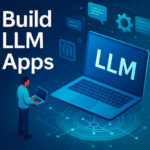How to Write a Machine Learning RFP That Actually Gets Results
Picture this: You’re sitting in yet another meeting where someone enthusiastically declares, “We need AI!” But three hours later, you’re still trying to figure out what that actually means for your business. Sound familiar?
I’ve been there. And if you’re reading this, chances are you’re facing the same challenge translating exciting ML possibilities into concrete vendor proposals that don’t end up as expensive science experiments.
Here’s the thing: a well crafted Machine Learning RFP isn’t just paperwork. It’s your roadmap to finding the right partner and avoiding those cringe-worthy “this isn’t what we asked for” moments six months down the line.
Table of Contents
Why Machine Learning RFPs Actually Matter (More Than You Think)
Let’s start with the basics. An RFP Request for Proposal is essentially your way of saying, “Here’s what we need, show us how you’d solve it.” Pretty straightforward, right?
But here’s where it gets interesting (and where most people stumble). When you’re dealing with machine learning projects, you’re not just buying software or hiring developers. You’re investing in outcomes that depend on data quality, model performance, and a dozen other variables that traditional RFPs barely touch.
Without a solid RFP process, you’ll likely face the usual suspects: misaligned expectations, budget surprises that make your CFO question your judgment, and timelines that stretch longer than a Netflix series. I’ve seen promising ML initiatives crash and burn simply because nobody took the time to clearly define what success looked like upfront.
Think of your ML RFP as a translator between your business dreams and technical reality. It forces you to get specific about what you want and helps vendors understand how to deliver it.
What Makes a Machine Learning RFP Different?
So what exactly is an Machine Learning RFP? It’s a structured document that invites vendors to propose machine learning solutions for your specific business challenge. But unlike your typical IT procurement, this isn’t about buying servers or licensing software.
The key difference? Traditional RFPs focus on features and functionality. ML RFPs need to dig into data, algorithms, accuracy requirements, and scalability concerns. You’re essentially asking vendors to predict the future performance of models that don’t exist yet, using data they haven’t seen.
Organizations typically reach for Machine Learning RFPs when they’re tackling predictive analytics (will customers churn?), natural language processing (what are people saying about us?), computer vision (is this transaction fraudulent?), or automation challenges (which leads are worth pursuing?).
I see these most often in finance (fraud detection, risk assessment), healthcare (diagnostic support, patient outcomes), retail (recommendation engines, demand forecasting), and government (citizen services, resource allocation). Each industry brings its own quirks and compliance requirements that make the RFP process even more critical.
Why You Can’t Skip the RFP Process for ML Projects
Look, I get it. RFPs feel bureaucratic. They take time. But for ML projects, they’re not just helpful they’re essential.
First, they force alignment. When you write down exactly what business problem you’re solving, everyone suddenly gets on the same page. No more assuming that “improve customer experience” means the same thing to marketing, IT, and the C-suite.
Second, they act as a filter. The ML vendor space is crowded with everyone from boutique consultancies to big tech giants. A good RFP helps you separate the serious contenders from those who just throw around buzzwords like “deep learning” and “AI-powered innovation.”
Third, transparency becomes your friend. When vendors have to spell out their approach, pricing, and capabilities in response to your specific requirements, you can actually compare apples to apples instead of trying to decode marketing speak.
Finally and this is crucial RFPs force discussions about data security, compliance, and scalability upfront. These aren’t afterthoughts in ML projects; they’re fundamental constraints that will shape everything else.
The Biggest Challenges (And How They’ll Trip You Up)
Here’s where things get real. Writing an effective ML RFP is harder than it looks, and I’ve seen smart people make predictable mistakes.
The biggest hurdle? Translating fuzzy business problems into concrete ML requirements. “We want to be more data driven” sounds great in a boardroom, but vendors need specifics. What decisions are you trying to automate? What data do you have? What would success actually look like in numbers?
Then there’s the data reality check. Your team might assume you have clean, accessible data ready for modeling. Spoiler alert: you probably don’t. Most organizations discover their data challenges only after vendors start asking pointed questions about format, completeness, and access permissions.
Defining success metrics gets tricky too. Business stakeholders care about ROI and efficiency gains. Technical teams focus on accuracy scores and model performance. Your RFP needs to bridge both worlds without getting lost in jargon.
And let’s talk about expectations management. Business teams often expect ML magic perfect predictions delivered quickly and cheaply. Technical teams know better but sometimes overcomplicate their requirements. Your RFP becomes the negotiated middle ground where realistic meets ambitious.
Finally, you’ll encounter the buzzword problem. Vendors love throwing around impressive sounding terms, and it’s easy to get distracted by shiny methodology names instead of focusing on practical outcomes.
The Essential Components of an Machine Learning RFP That Works

Alright, let’s get into the meat of what actually goes into one of these documents. I’ll walk you through each section and why it matters.
Executive Summary should give vendors the 30-second elevator pitch version of your project. Think of it as the hook that makes them want to keep reading and put their best people on your proposal.
Company Background provides context that helps vendors tailor their approach. Are you a startup moving fast, or an enterprise with complex approval processes? Are you in a regulated industry? This intel shapes how they position their solution.
Project Objectives is where you get specific about the business problem. Instead of “improve efficiency,” try “reduce manual review time for loan applications by 40% while maintaining approval accuracy above 95%.” See the difference?
Scope of Work defines the boundaries. What exactly are you asking vendors to deliver? A proof of concept? A production-ready system? Ongoing model maintenance? Be explicit about what’s included and what’s not.
Technical Requirements covers the nuts and bolts. Do you need cloud based solutions or on-premises deployment? Are there specific platforms or tools you’re already using? What about API requirements for integration with existing systems?
Data Requirements addresses the elephant in the room. How much data do you have? What format is it in? What are the privacy restrictions? Don’t oversell your data readiness vendors will figure it out anyway, and honesty upfront saves everyone time.
Performance Metrics translates business goals into measurable technical outcomes. You might care about reducing false positives in fraud detection, but you also need to define acceptable accuracy thresholds, processing speed requirements, and interpretability needs.
Compliance & Security isn’t optional anymore. Whether it’s GDPR, HIPAA, SOX, or industry-specific regulations, spell out your requirements. Include data handling protocols, audit requirements, and any certification needs.
Project Timeline should balance ambition with reality. ML projects have phases data exploration, model development, testing, deployment and each takes time. Build in buffer for the inevitable surprises.
Budget Expectations helps everyone calibrate appropriately. You don’t need to reveal your exact budget, but providing a range helps vendors propose solutions that actually fit your financial reality.
Proposal Format Guidelines ensure you can actually compare responses. When every vendor structures their proposal differently, evaluation becomes a nightmare. Give them a template to follow.
Evaluation Criteria tells vendors what matters most to you. Is it lowest cost? Fastest delivery? Most innovative approach? Most relevant experience? Weight these factors so vendors know how to prioritize their pitch.
Your Step-by-Step Guide to Writing an Machine Learning RFP
Ready to tackle this? Here’s how I recommend approaching it, having been through this process more times than I care to count.
Step 1: Get crystal clear on your business objectives. Before you touch a keyboard, spend real time defining the problem you’re solving. What decision will ML help you make better or faster? What’s the cost of getting it wrong? What does success look like in concrete, measurable terms?
Step 2: Bring the right people into the room early. You need business stakeholders who understand the problem context and technical folks who grasp the implementation reality. Don’t try to write this in isolation and then get buy in later.
Step 3: Audit your data situation honestly. This is often painful but absolutely necessary. What data do you actually have access to? What’s the quality like? What are the legal and technical constraints on using it? Get answers before you make promises to vendors.
Step 4: Define success criteria that everyone can live with. Your metrics need to satisfy both business goals and technical feasibility. Work backwards from business impact to technical performance requirements.
Step 5: Set realistic timelines. ML projects take longer than you think, especially if you’re new to this. Factor in data preparation, model iteration, testing, and deployment. Add buffer time for surprises there will be surprises.
Step 6: Create vendor evaluation criteria before you see any proposals. Decide what matters most while you’re still objective. It’s much harder to evaluate fairly when you’re comparing three wildly different approaches after the fact.
Step 7: Standardize the proposal format. Give vendors a template or detailed guidelines about how to structure their response. This makes your evaluation process infinitely easier and more fair.
Common Mistakes That’ll Come Back to Haunt You
Let me save you some pain by highlighting the mistakes I see repeatedly.
Don’t be vague about business objectives. “Improve customer satisfaction” isn’t specific enough. “Reduce customer service response time from 24 hours to 4 hours while maintaining quality scores above 4.5/5” gives vendors something concrete to work with.
Avoid getting seduced by technology for its own sake. Yes, transformer models and deep learning sound impressive, but do they solve your actual business problem better than simpler approaches? Focus on outcomes, not methodology coolness.
Don’t underestimate data preparation. Most ML projects spend 80% of their time on data cleaning, integration, and preparation. If your RFP assumes clean, ready to use data, you’re setting everyone up for disappointment.
Resist the urge to set impossible timelines. “We need this in production in six weeks” might work for some software projects, but ML development has inherent uncertainties that require more realistic planning.
Finally, don’t forget about post-deployment support. Models need monitoring, retraining, and maintenance. If your RFP only covers initial development, you’ll face unpleasant surprises later about ongoing costs and responsibilities.
Evaluating Vendors: Beyond the Lowest Bid

When proposals start coming in, resist the temptation to focus only on cost or the flashiest presentation. Here’s what actually matters for long-term success.
First, alignment with your business goals trumps technical sophistication. A vendor who clearly understands your problem and proposes a practical solution beats one who showcases impressive but irrelevant capabilities.
Check references carefully, and ask specific questions about similar projects. How did they handle unexpected challenges? What would the reference client do differently? Were post-deployment support and model performance in line with expectations?
Look for vendors who balance innovation with pragmatism. You want partners who can push your capabilities forward without treating your project as a research experiment. The best vendors acknowledge uncertainties honestly while providing clear mitigation strategies.
Consider the long-term relationship potential. ML projects often evolve into ongoing partnerships for model improvement, new use cases, and expanded capabilities. Choose vendors you can imagine working with for years, not just months.
Tools and Templates to Make Your Life Easier
You don’t have to start from scratch. Several tools and resources can streamline your RFP creation process.
RFP software platforms like RFPIO and Loopio offer templates and collaboration features that help manage the entire process from creation to vendor evaluation. They’re particularly useful for organizations that regularly issue RFPs.
Industry associations and consulting firms often publish sample ML RFP templates. While these need customization for your specific needs, they provide good starting frameworks and ensure you don’t miss critical sections.
The key is adapting generic templates to address ML-specific requirements around data, model performance, and scalability. Don’t just fill in the blanks think through what makes your project unique and adjust accordingly.
What’s Coming Next for ML RFPs
The landscape is evolving, and your RFP approach should evolve too.
Ethical AI considerations are becoming standard requirements, not nice-to-haves. Vendors increasingly need to address bias detection, fairness metrics, and algorithmic transparency in their proposals.
Explainability requirements are growing, especially in regulated industries. Your RFP might need to specify not just accuracy requirements but also interpretability needs for model decisions.
We’re seeing more standardized frameworks for AI procurement emerging from government agencies and industry consortiums. These provide helpful templates but still require customization for specific use cases.
Looking ahead, AI-assisted tools for automating RFP creation and evaluation are starting to appear. While still early, these could eventually help manage the complexity of comparing technical proposals across multiple vendors.
Wrapping Up: Your Path Forward
Here’s the bottom line: a well crafted Machine Learning RFP isn’t just bureaucratic paperwork. It’s your insurance policy against miscommunication, scope creep, and unrealistic expectations.
The best RFPs I’ve seen share common characteristics: they’re specific about business goals, honest about constraints, realistic about timelines, and clear about success metrics. They facilitate genuine dialogue between organizations and vendors rather than just checking procurement boxes.
My advice? Start with your business problem, not the technology. Involve both technical and business stakeholders from the beginning. Be honest about your data reality and organizational constraints. And remember that the cheapest proposal isn’t always the best value.
Take the time to get your RFP right. Your future self and your budget will thank you when you’re celebrating a successful ML deployment instead of explaining why the project went sideways.
The vendors are out there, and many of them are genuinely good at what they do. Your job is creating an RFP that helps you find the right match and sets everyone up for success. Now go make some Machine Learning RFP magic happen.
How long should a typical ML RFP process take from start to finish?
Plan for 6-10 weeks total. That includes 2-3 weeks for internal preparation and RFP creation, 3-4 weeks for vendors to respond (ML proposals need more time than standard IT RFPs), and 2-3 weeks for evaluation and selection. Don’t rush this hasty decisions often lead to expensive do-overs.
What if we don’t have clean, organized data ready for ML projects?
Be honest about it in your RFP. Most organizations overestimate their data readiness, and vendors prefer knowing the real situation upfront. Include data assessment and preparation as part of the project scope. Many ML projects actually start with data discovery and cleaning phases that’s completely normal.
Should we include our exact budget in the RFP?
Provide a realistic budget range rather than your exact number. This helps vendors propose solutions that actually fit your financial reality without leaving money on the table. Something like “budget range of $150K-$250K” gives enough guidance without revealing your maximum.
How do we evaluate ML proposals when we don’t have deep technical expertise internally?
Focus on business outcomes and vendor communication skills first. Can they explain their approach in terms you understand? Do they demonstrate clear understanding of your business problem? Consider bringing in an independent ML consultant for technical evaluation, or ask vendors to present their proposals to help clarify complex technical aspects.








Leave a Comment